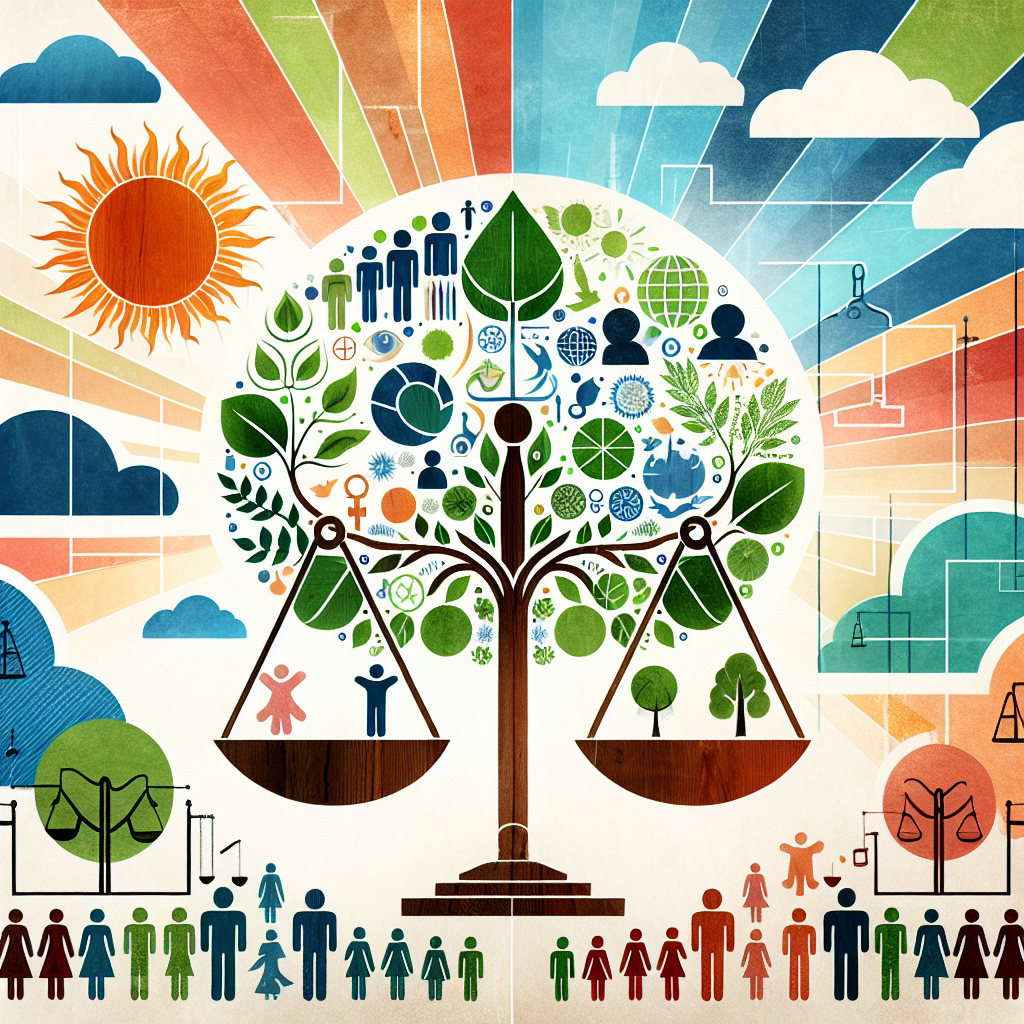What Quality of Life Really Means

Discover what Quality of Life really means and how it can transform your everyday living. Visit My Vibrant Vitality now to start your journey towards a better quality of life.
Understanding the True Essence of Quality of Life
Quality of life is a term that is often thrown around in conversations, but do we truly understand what it means? It is a concept that goes beyond the basic necessities of life such as food, shelter, and clothing. It encompasses a broader spectrum of human experiences and conditions that contribute to an individual’s overall well-being and happiness.
Quality of life is a multidimensional concept that includes physical health, psychological state, level of independence, social relationships, personal beliefs, and their relationship to salient features of the environment. It is not merely about material wealth or physical health, but it is about the realisation of one’s potential, peace of mind, and satisfaction with life’s circumstances.
The World Health Organization defines quality of life as an individual’s perception of their position in life in the context of the culture and value systems in which they live and in relation to their goals, expectations, standards, and concerns. This definition underscores the subjective nature of quality of life. It is a personal and individual experience, shaped by a person’s unique life circumstances, values, and beliefs.
Physical health is a crucial aspect of quality of life. It is about having the energy and vitality to engage in daily activities and to live a long, healthy life. It involves not only the absence of disease but also regular physical activity, a balanced diet, and adequate rest.
However, quality of life is not just about physical well-being. It also includes psychological well-being. This involves having a positive outlook on life, the ability to manage stress, and the capacity to acquire skills and knowledge. It is about feeling good about oneself, maintaining positive relationships, and having a sense of purpose in life.
Social relationships also play a significant role in determining the quality of life. Humans are social beings, and we thrive on connections with others. Healthy relationships with family, friends, and the community provide emotional support, enhance self-esteem, and contribute to a sense of belonging and security.
Personal beliefs, including spiritual or religious beliefs, also contribute to the quality of life. They provide a framework for understanding the world and give meaning and purpose to life. They can offer comfort in times of distress, guide decision-making, and promote a sense of peace and contentment.
Finally, the environment in which one lives significantly impacts the quality of life. This includes not only the physical environment, such as housing and the local community, but also the social and political environment. Living in a safe, clean, and supportive community, having access to quality education and healthcare, and enjoying civil liberties and political freedoms all contribute to a high quality of life.
In conclusion, quality of life is a complex and multifaceted concept that involves various aspects of human life. It is about more than just material wealth or physical health; it is about living a fulfilling, meaningful, and satisfying life. It is about realizing one’s potential, maintaining healthy relationships, having a sense of purpose, and living in a supportive and enabling environment. Understanding the true essence of quality of life can help us make informed decisions that enhance our well-being and lead to a more fulfilling and satisfying life.
Exploring the Different Dimensions of Quality of Life

Quality of life is a term that is often thrown around in conversations, but what does it truly mean? It is a multifaceted concept that encompasses various dimensions, each contributing to our overall sense of well-being and satisfaction with life. This article aims to explore these different dimensions and shed light on what quality of life really means.
To begin with, the physical dimension of quality of life is perhaps the most tangible and easily understood. It pertains to our physical health and the degree to which we are free from illness and disability. It also includes factors such as access to quality healthcare, nutritious food, clean water, and a safe living environment. However, physical health is not the sole determinant of quality of life.
Transitioning to the psychological dimension, it involves our mental and emotional well-being. This includes our ability to manage stress, maintain positive relationships, and experience joy, contentment, and fulfillment. It also encompasses our self-esteem, personal beliefs, and overall outlook on life. Mental health is increasingly recognized as a critical component of quality of life, with growing awareness of the importance of mental health support and services.
Next, the social dimension of quality of life refers to our relationships and interactions with others. It includes our sense of belonging and acceptance, the strength of our social networks, and our ability to give and receive support. It also involves our participation in social activities and our roles within our families, communities, and societies. The social dimension underscores the fact that we are social beings who thrive on connection and community.
The economic dimension, on the other hand, relates to our financial stability and economic opportunities. It includes factors such as income, employment, and access to resources and services. Economic security is a key aspect of quality of life, as it enables us to meet our basic needs and pursue our goals and aspirations.
Lastly, the environmental dimension of quality of life involves the quality of our natural and built environments. This includes factors such as air and water quality, access to green spaces, and exposure to environmental hazards. The environmental dimension highlights the interdependence between our well-being and the health of our planet.
In conclusion, quality of life is a complex and multifaceted concept that goes beyond mere physical health or material wealth. It involves various dimensions, each of which contributes to our overall sense of well-being and satisfaction with life. Understanding these dimensions can help us to better appreciate what quality of life really means and to strive for a balanced and fulfilling life. It can also guide policymakers and practitioners in developing interventions and policies that enhance quality of life for all.
Therefore, when we talk about improving our quality of life, we should not just focus on one aspect, but consider all these dimensions. It is about creating a balance between our physical, psychological, social, economic, and environmental needs. It is about living a life that is not just long, but also rich in experiences, relationships, and fulfillment. That, in essence, is what quality of life really means.
The Impact of Health and Wellness on Quality of Life
Quality of life is a term that is often thrown around in conversations, but what does it truly mean? It is a multifaceted concept that encompasses a variety of aspects, including physical health, psychological state, level of independence, social relationships, personal beliefs, and their relationship to salient features of the environment. However, one of the most significant factors that influence the quality of life is health and wellness.
Health and wellness are not merely the absence of disease or infirmity; they are states of complete physical, mental, and social well-being. They are dynamic concepts that involve a continuous process of change and growth. When we talk about health and wellness, we are talking about taking care of our bodies, our minds, and our emotions. It’s about making choices that lead to a balanced and fulfilling life.
The impact of health and wellness on the quality of life is profound. Good health and wellness can enhance the quality of life by enabling individuals to perform daily activities without discomfort or limitations. They can participate fully in society and enjoy an active lifestyle. On the other hand, poor health and wellness can lead to a lower quality of life, characterized by illness, pain, and disability.
Physical health is a critical component of overall wellness. It involves maintaining a healthy body weight, eating a balanced diet, getting regular exercise, and getting regular medical check-ups. Good physical health can increase longevity and reduce the risk of disease. It can also improve mood and energy levels, making it easier to enjoy life and cope with stress.
Mental health, on the other hand, involves emotional, psychological, and social well-being. It affects how we think, feel, and act. Good mental health can enhance the quality of life by promoting productivity, improving relationships, and fostering resilience in the face of adversity. It can also reduce the risk of mental health disorders such as depression and anxiety.
Social wellness is another important aspect of health and wellness. It involves having positive relationships, a strong social network, and a sense of connection to the community. Social wellness can enhance the quality of life by providing support, reducing stress, and promoting a sense of belonging.
In addition to these aspects, spiritual wellness, which involves having a sense of purpose and meaning in life, can also significantly impact the quality of life. It can provide a sense of peace, hope, and direction, which can help individuals cope with life’s challenges and enjoy life’s pleasures.
In conclusion, health and wellness are integral to the quality of life. They can enhance the quality of life by promoting physical, mental, and social well-being. They can also reduce the risk of disease, improve longevity, and foster resilience. Therefore, it is essential to prioritize health and wellness in order to enjoy a high quality of life. It’s about making choices every day that will support our health and wellness, and in turn, our quality of life. After all, our quality of life is a direct reflection of how we take care of ourselves at the physical, mental, and emotional levels.